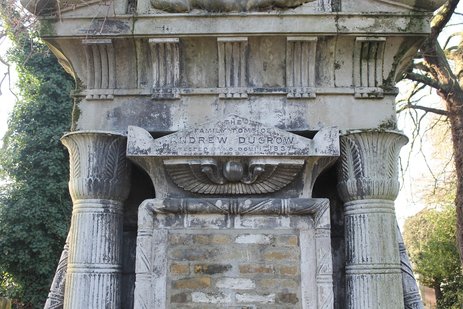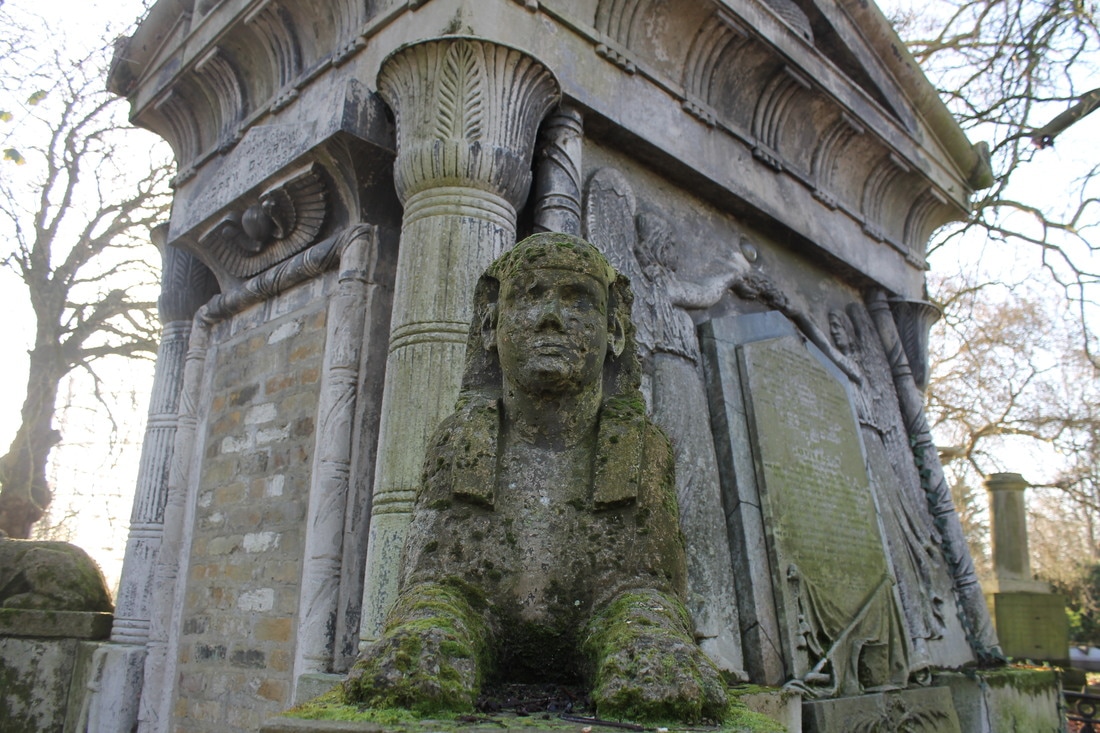Colossus of Equestrians

Andrew Ducrow was known as the 'Colossus of Equestrians'. His contribution to English circus was immense and he is seen as one of the greatest performers of his generation. Ducrow clearly thought so too; the inscription on his self-designed mausoleum reads: “This tomb was erected by genius for the reception of its own remains.”
Ducrow’s father was a legendary circus performer from Belgium. Upon moving to Southwark, he became known as ‘the Flemish Hercules’ and encouraged his children to develop the same passion for the circus. In his infancy, Ducrow was being trained to tumble; he also practiced the arts of dancing, balancing, riding and fencing, amongst others. With this, the foundations for a successful career as a showman were laid.
By the age of 15, Ducrow’s career had taken off. He was an established equestrian at Astley’s Royal Amphitheatre and it was his performances here that made him famous. A performance of particular repute was the ‘Flying Wardrobe’ in which Ducrow would take flight, pretending to fall from his horse whilst drunk and dressed eccentrically, much to the amusement of the crowd. With the stripping of his clothes and many false falls, the act would conclude revealing Ducrow as the star rider. The act is still performed today.
After some time spent working in France and Belgium, Ducrow returned to his country of birth with his own circus company. He put on the two shows for which he is best recognised: Byron’s poem, Mazeppa, which saw him showcase his wide array of tricks - including his ability to ride two horses simultaneously - and the Courier of St Petersburg which depicted a route to St Petersburg through various acts. The success of these shows saw Ducrow take on the management of Astley’s in 1824. In 1841, the amphitheatre burnt down; he suffered a mental breakdown and died soon after.
The extravagance of the site at which he is buried shows us the kind of man that Andrew Ducrow was: a true showman in his life and a true showman after death.
Ducrow’s father was a legendary circus performer from Belgium. Upon moving to Southwark, he became known as ‘the Flemish Hercules’ and encouraged his children to develop the same passion for the circus. In his infancy, Ducrow was being trained to tumble; he also practiced the arts of dancing, balancing, riding and fencing, amongst others. With this, the foundations for a successful career as a showman were laid.
By the age of 15, Ducrow’s career had taken off. He was an established equestrian at Astley’s Royal Amphitheatre and it was his performances here that made him famous. A performance of particular repute was the ‘Flying Wardrobe’ in which Ducrow would take flight, pretending to fall from his horse whilst drunk and dressed eccentrically, much to the amusement of the crowd. With the stripping of his clothes and many false falls, the act would conclude revealing Ducrow as the star rider. The act is still performed today.
After some time spent working in France and Belgium, Ducrow returned to his country of birth with his own circus company. He put on the two shows for which he is best recognised: Byron’s poem, Mazeppa, which saw him showcase his wide array of tricks - including his ability to ride two horses simultaneously - and the Courier of St Petersburg which depicted a route to St Petersburg through various acts. The success of these shows saw Ducrow take on the management of Astley’s in 1824. In 1841, the amphitheatre burnt down; he suffered a mental breakdown and died soon after.
The extravagance of the site at which he is buried shows us the kind of man that Andrew Ducrow was: a true showman in his life and a true showman after death.



